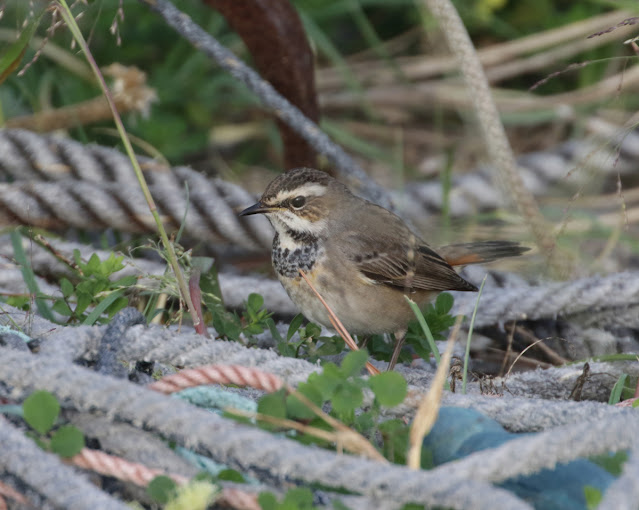Deflated isn't the way I'd expect to feel after a three-night stay on Hegurajima, last week (Oct 13-16), during a period when huge numbers of birds were on the move. But there we are; failing to connect with a Hair-crested Drongo has that effect on me it seems. What made this particular dip even harder to bear was that I got the info about the bird via a friend on Tobishima rather than from people actually on Hegura! Back at my minshyuku in the evening, that no one else there had seen the bird either was of zero consolation.
Do drongos tend to move on quickly? I've seen three Ashy Drongos on Hegura, two of them were only seen by me(!), and the third, though twitchable by everyone already on the island was also a one-day bird. On the other hand several spring Black Drongos I've seen on Tsushima all hung around for days. Maybe it's Hegura they don't like.
The first three days on the island were marked by significant NW winds and partly cloudy conditions with only a few light showers. The result being a high turnover of migrants. Thrushes could be seen leaving the island each evening and new arrivals dropping in through the day. There were three distinct waves of Daurian Redstarts with numbers fluctuating wildly. I counted fewer than 10 on one circuit of the island but at the other extreme they were absolutely everywhere on two separate occasions. By everywhere, just to take the small 'park' in the harbour as an example, there were 10 on the scrap of lawn, another 12 lined-up as if at an arcade shooting gallery on the low wooden fence at the back of the lawn, and enough to seemingly occupy every available perch in the small unkempt area the other side of that fence. This density was perpetuated throughout the island and two of the three waves resulted in massive numbers like this.
The highlight of the week, barring that Drongo of course, was Pied Wheatear.
I'd returned to the minshyuku for breakfast, during which someone came in and showed me his camera asking which wheatear he'd photographed! As I'd just completed my Japan wheatear set a month earlier there wasn't quite the frisson of excitement there would otherwise have been but as all wheatears here are rare, and such fantastic birds too, I was guilty of first answering his question with two of my own WHEN? and WHERE? It transpired Pied was a tick for him so he was delighted and settled down to his breakfast while I bolted the last of mine and rushed off.
When I first saw it in front of Tsukasa (minshyuku) at about 8am I thought it was a young male because it seemed so dark on the lower scapulars and malar as though there was concealed black but seeing it again in the afternoon, after it had relocated to the northern headland, and in different light it was so much paler I changed my mind. In fact for a second I thought it was another individual, so different did it look!
There were other good birds that day such as Japanese Quail, which I see surprisingly often in October on Hegura, and Pallas's Grasshopper Warbler, both of which are flush specialties. However, for me, Bluethroat, a first autumn female I think, was the other standout bird of the day. It's actually only the third Bluethroat I've seen in Japan.












No comments:
Post a Comment